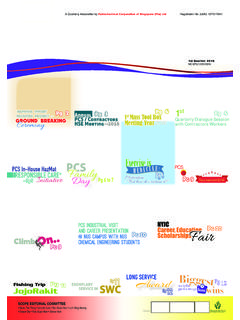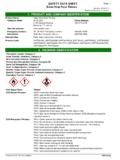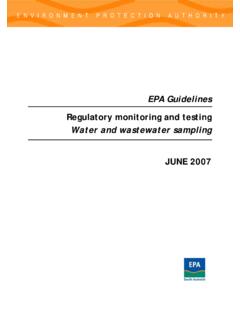Transcription of SAFETY DATA SHEET (SDS) XYLENE 1. Identification
1 Revised 3 on 18/3/2015 XYLENE SDS Page 1 of 8 SAFETY DATA SHEET (SDS) XYLENE 1. Identification SDS Record Number : PCS 08006 Date of SDS : 18 March 2015 Identity of the substance : XYLENE Product Description : Aromatic hydrocarbon Other names/synonyms : Dimethylbenzene, Methyl Toluene, Xylol, xylenes (IBC code) Name of the supplier : Petrochemical Corporation of Singapore (Private) Limited Recommended uses : Solvent, diluent, chemical feedstock, or fuel Contact detail of the supplier : 100 Ayer Merbau Road, Singapore 628277.
2 +65 68672102 24-Hour Emergency contact : Asia Pacific +65 3158 1074 (Singapore) China +86 10 5100 3039 (Beijing) Europe, Israel & Americas +44 (0) 1235 239 670 (UK) Middle East & Africa +44 (0) 1235 239 671 (UK) 2. Hazards Identification GHS Classification Hazard Class Hazard Category Flammable Liquid 3 Acute Toxicity (Oral) 5 Acute Toxicity (Inhalation) 4 Skin Corrosion/Irritation 2 Serious Eye Damage/ Irritation 2A Caricinogenicity 2 Toxic to reproduction 1B STOST (Single exposure) 2 (central nervous system) STOST (Repeated exposure) 2 (central nervous system)
3 Aspiration hazard 1 Acute hazards to the aquatic environment 2 Pictograms Signal Word: Danger Hazard Statements Flammable liquid and vapour May be harmful if swallowed Harmful if inhaled Causes skin irritation and serious eye irritation May damage fertility or the unborn child May cause damage to organs May cause damage to organs through prolonged or repeated exposure May be fatal if swallowed and enters airways Toxic to aquatic life Revised 3 on 18/3/2015 XYLENE SDS Page 2 of 8 Precautionary Statements Prevention Keep container tightly closed.
4 Keep away from heat/sparks/open flames/hot surfaces. No smoking. Wear protective gloves /protective clothing/eye protection/face protection Ground/Bond container and receiving equipment Use explosion-proof electrical/ventilating/lighting equipment. Take precautionary measures against static discharge. Use only non-sparking tools. Wash thoroughly after handling. Obtain special instructions before use. Do not handle until all SAFETY precautions have been read and understood. Do not eat, drink or smoke when using this product.
5 Avoid breathing dust/fume/gas/mist/vapours/spray. Avoid release to the environment Use only outdoors or in a well-ventilated area. Response IF ON SKIN (or hair): Remove/take off immediately all contaminated clothing. Rinse skin with water/shower. Call a POISON CENTER/doctor/physician if you feel unwell. In case of fire: Use appropriate media for extinction. If INHALED: Remove victim to fresh air and keep at rest in a position comfortable for breathing. IF ON SKIN: Wash with plenty of soap and water. Take of contaminated clothing and wash before re-use.
6 If skin irritation occurs: Get medical advice/attention. IF IN EYES: Rinse cautiously with water for several minutes. Remove contact lenses, if present and easy to do. Continue rinsing. If eye irritation persists, get medical advice/attention. Wash hands after handling IF exposed or concerned: Get medical attention/advice. IF SWALLOWED: Immediately call a POISON CENTER or doctor/physician. Do NOT induce vomiting. Storage Store in well-ventilated place. Keep cool. Store locked up. Disposal Dispose of the contents in accordance to the local mandatory rules and regulations 3.
7 Composition/Information On Ingredients Chemical Identification : C6H4(CH3)2 Common name(s) / synonym(s) : Dimethylbenzene, Methyl Toluene, Xylol CAS number / EC number : 1330-20-7/215-535-7 Other substances in product Hazardous to health or environment Chemical Identification Common name CAS number Concentration Ethyl Benzene Ethyl Benzene 100-41-4 51- 69 wt% m- XYLENE m- XYLENE 108-38-3 16 - 26 wt% p- XYLENE p- XYLENE 106-42-3 6 - 11 wt% o- XYLENE o- XYLENE 95-47-6 7 - 13 wt% Toluene Toluene 108-88-3
8 Wt% Revised 3 on 18/3/2015 XYLENE SDS Page 3 of 8 4. First-Aid Measures Eye: Irrigate immediately. If this chemical contacts the eyes, immediately wash (irrigate) the eyes with large amounts of water, occasionally lifting the lower and upper lids. Get medical attention immediately. Skin: Soap wash promptly. If this chemical contacts the skin, promptly flush the contaminated skin with soap and water. If this chemical penetrates the clothing, promptly remove the clothing and flush the skin with water.
9 If irritation persists after washing, get medical attention. Breathing: Respiratory support. If a person breathes large amounts of this chemical, move the exposed person to fresh air at once. If breathing has stopped, perform artificial resuscitation. Keep the affected person warm and at rest. Get medical attention as soon as possible. Swallow: Medical attention immediately. If this chemical has been swallowed, get medical attention immediately. DO NOT induce vomiting. Keep at rest. 5. Fire-Fighting Measures Extinguishing media Use foam or dry chemical to extinguish fire.
10 Use water spray to cool fire exposed surfaces and to protect personnel. Shut off fuel to fire if possible to do so without hazard. If a leak or spill has not ignited use water spray to disperse the vapours. Specific Hazards Arising From The Chemical: General Hazards: Flammable Liquid; may release vapours that form flammable mixtures at or above the flash point. Toxic gases will form upon combustion. Hazardous Combustion Products: Fumes, smoke, and carbon monoxide. This liquid is volatile and gives off invisible vapors. Either the liquid or vapor may settle in low areas or travel some distance along the ground or surface to ignition sources where they may ignite or explode.









